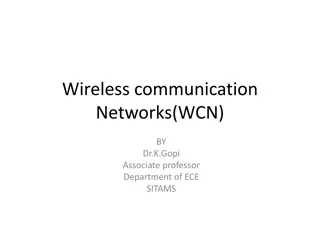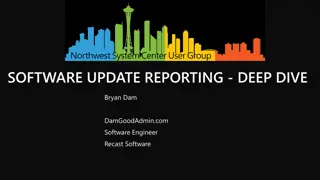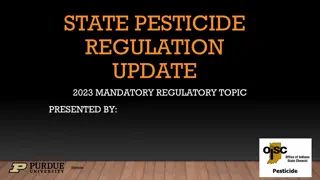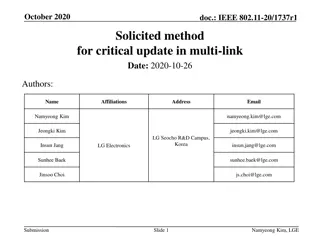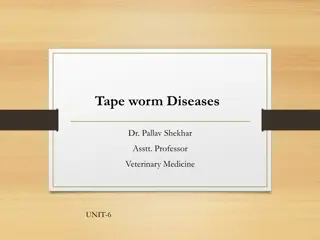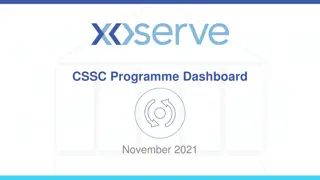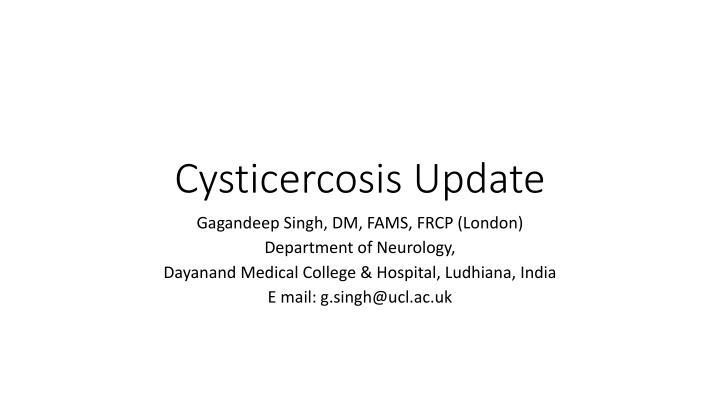
Neurocysticercosis: Key Messages and Treatment Insights
Gain insights into the diagnosis, treatment, and prevention of neurocysticercosis with updates on risk factors, clinical features, imaging studies, and medication management. Explore the impact of antihelminthic drugs, corticosteroids, and antiseizure medications on cysticercosis resolution and seizure control. Discover the importance of sanitation, meat inspection, and hygiene in preventing this preventable risk factor for epilepsy.
Download Presentation

Please find below an Image/Link to download the presentation.
The content on the website is provided AS IS for your information and personal use only. It may not be sold, licensed, or shared on other websites without obtaining consent from the author. If you encounter any issues during the download, it is possible that the publisher has removed the file from their server.
You are allowed to download the files provided on this website for personal or commercial use, subject to the condition that they are used lawfully. All files are the property of their respective owners.
The content on the website is provided AS IS for your information and personal use only. It may not be sold, licensed, or shared on other websites without obtaining consent from the author.
E N D
Presentation Transcript
Cysticercosis Update Gagandeep Singh, DM, FAMS, FRCP (London) Department of Neurology, Dayanand Medical College & Hospital, Ludhiana, India E mail: g.singh@ucl.ac.uk
Cysticercosis Update Disclosures Nil relevant
Cysticercosis Update Learning Objectives To demonstrate knowledge of risk factors for, life cycle and evolutionary stages of the cysticercus. To demonstrate ability to make a diagnosis of neurocysticercosis, based on clinical features and serological and imaging studies. To demonstrate knowledge of the varied clinical and imaging presentations of cysticercosis. To demonstrate ability to recommend various treatments based on the clinical and imaging presentations and evolutionary stages of cysticercosis.
Cysticercosis Update Key messages -1 Seizures and epilepsy occur during all evolutionary stages of brain cysticercosis. Serological studies indicate exposure to cysticercosis; Imaging mostly confirms diagnosis of infestation but also identifies anatomical location and evolutionary stage of brain cysticercosis. Antihelminthic treatment hastens resolution of cysticercosis but its impact on seizure burden is less certain. Corticosteroids provide relief from inflammation-associated symptoms of cysticercosis and are warranted during treatment with antihelminthics
Cysticercosis Update Key messages 2 Antiseizure medications are required to control seizures till such time that the cysticercuc completely resolves. Seizures and epilepsy are usually well-controlled with antiseizure medications but only very rarely may be drug-resistant. When epilepsy is poorly controlled, suspect associated hippocampal sclerosis or lesional epilepsy and assess for surgical treatment. Be mindful of drug-drug interaction while treatment neurocysticercosis
Cysticercosis Update Key messages 3 Oxfendazole is a new antihelminthic drug, the efficacy and safety of which needs to be evaluated in future clinical trials. Upto 1/3rdof epilepsies in many endemic regions of the world may be attributed to cysticercosis. Cysticercosis is a preventable risk factor for epilepsies. Cysticercosis is amenable to prevention by improving sanitation, meat inspection and hygiene, corralling pigs, taenicidal treatment of human carriers and porcine vaccination.

